If you’re looking to bring a touch of elegance and natural beauty into your home, the Peace Lily (Spathiphyllum) is one of the best indoor plants you can choose. Known for its graceful white blooms and lush green leaves, the Peace Lily is a favorite among both novice and experienced plant owners. Not only does it brighten any space aesthetically, but it also purifies the air, making your indoor environment healthier.
Despite its delicate appearance, the Peace Lily is surprisingly resilient and fairly easy to care for indoors. Whether you’re a beginner or want to improve your plant care skills, this guide provides everything you need to know about keeping your Peace Lily thriving.
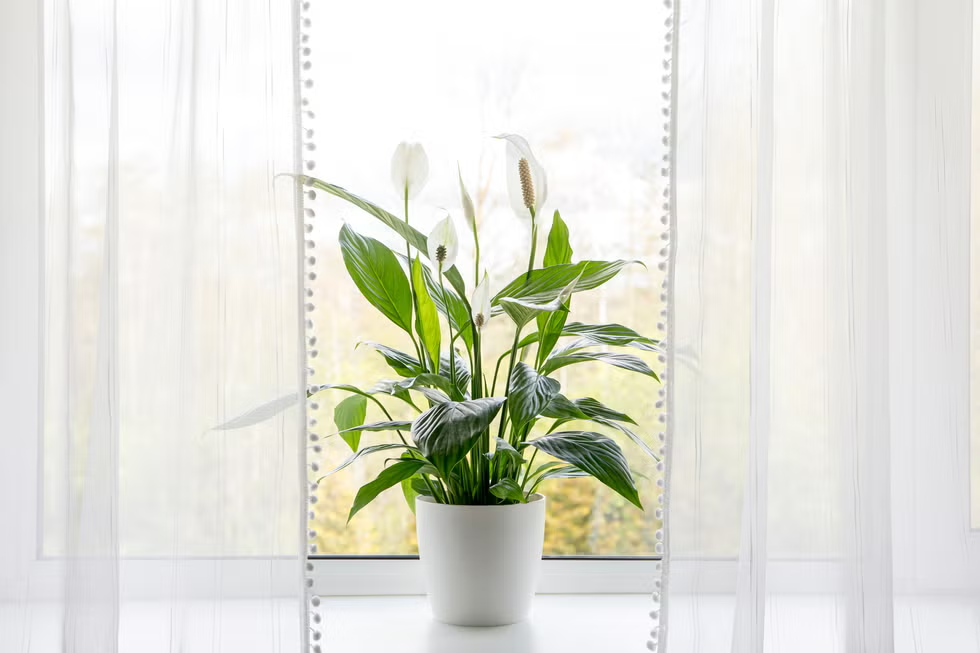
What is a Peace Lily?
The Peace Lily belongs to the Araceae family and is native to tropical regions of Central and South America. It’s famous for its elegant white spathes, which are often mistaken for flowers but are actually modified leaves surrounding the true tiny flowers on a spike.
Peace Lilies are popular houseplants because of their ability to thrive in low light and their air-purifying qualities — they can remove toxins like benzene, formaldehyde, and carbon monoxide from indoor air.
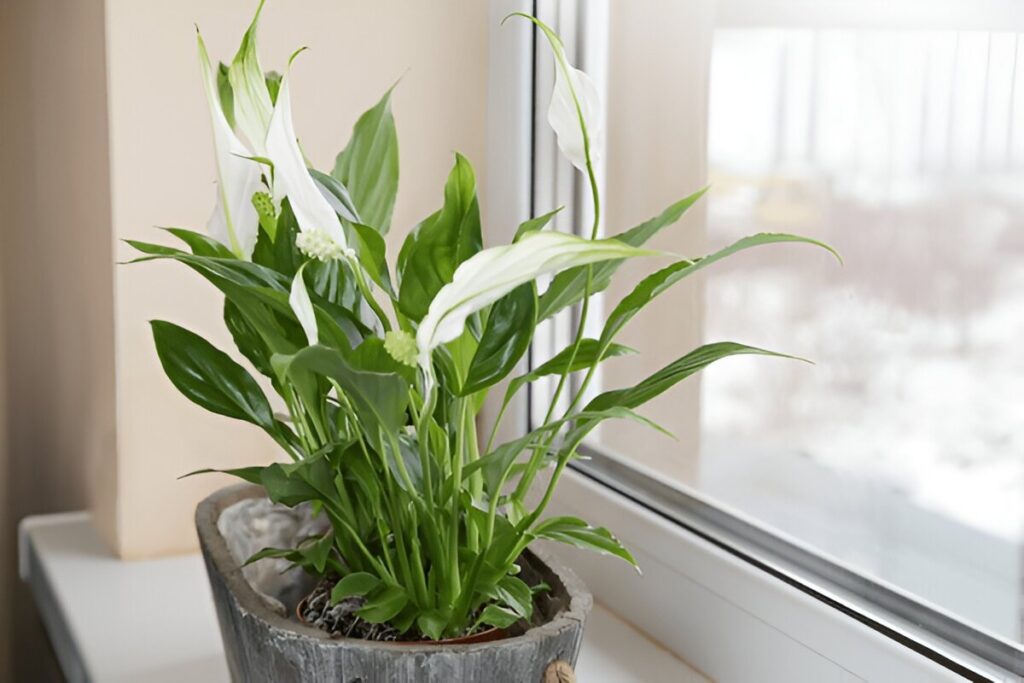
Ideal Indoor Conditions for Peace Lilies
Peace Lilies are tropical plants that thrive indoors under specific conditions that mimic their natural habitat.
Light Requirements
- Bright, indirect light is ideal. Place your Peace Lily near a north or east-facing window where it can receive gentle sunlight.
- Avoid direct sunlight — it can scorch the leaves and cause brown spots.
- Peace Lilies tolerate low light but may bloom less frequently and grow slower.
Temperature
- Maintain indoor temperatures between 65°F and 80°F (18°C – 27°C).
- Avoid cold drafts, air conditioning vents, and sudden temperature drops below 55°F (13°C).
Humidity
- Peace Lilies love humidity. Ideal humidity is between 40-60%.
- Increase humidity with a humidifier, pebble tray with water, or by grouping plants together, especially in dry climates or winter months.
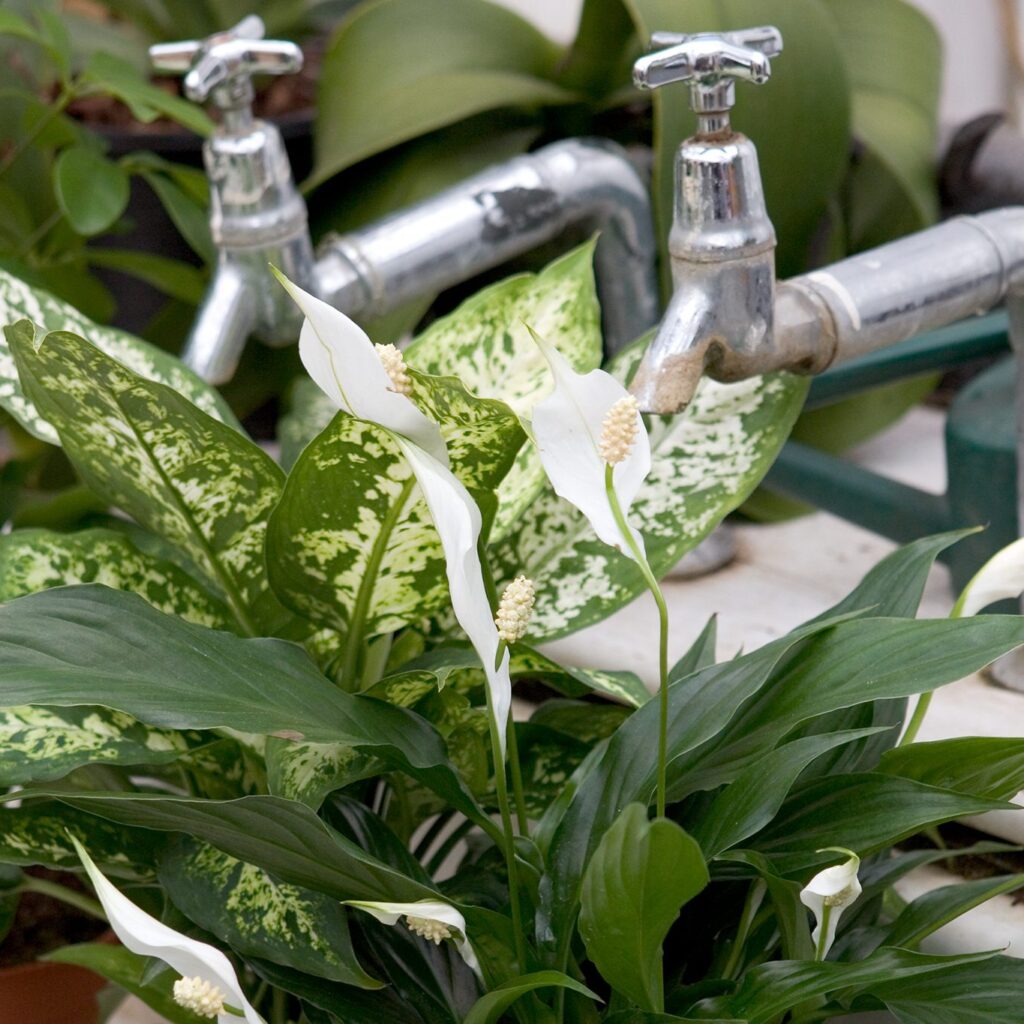
Choosing the Right Pot and Soil
Pot Selection
- Use a pot with drainage holes to prevent waterlogging, which causes root rot.
- Choose a size slightly larger than the root ball; Peace Lilies prefer to be somewhat root-bound but repot as needed when roots outgrow the pot.
Soil Type
- Use a well-draining, peat-based potting mix that retains moisture but allows excess water to drain.
- A mix designed for houseplants or tropical plants is best.
- You can add perlite or orchid bark to improve aeration.
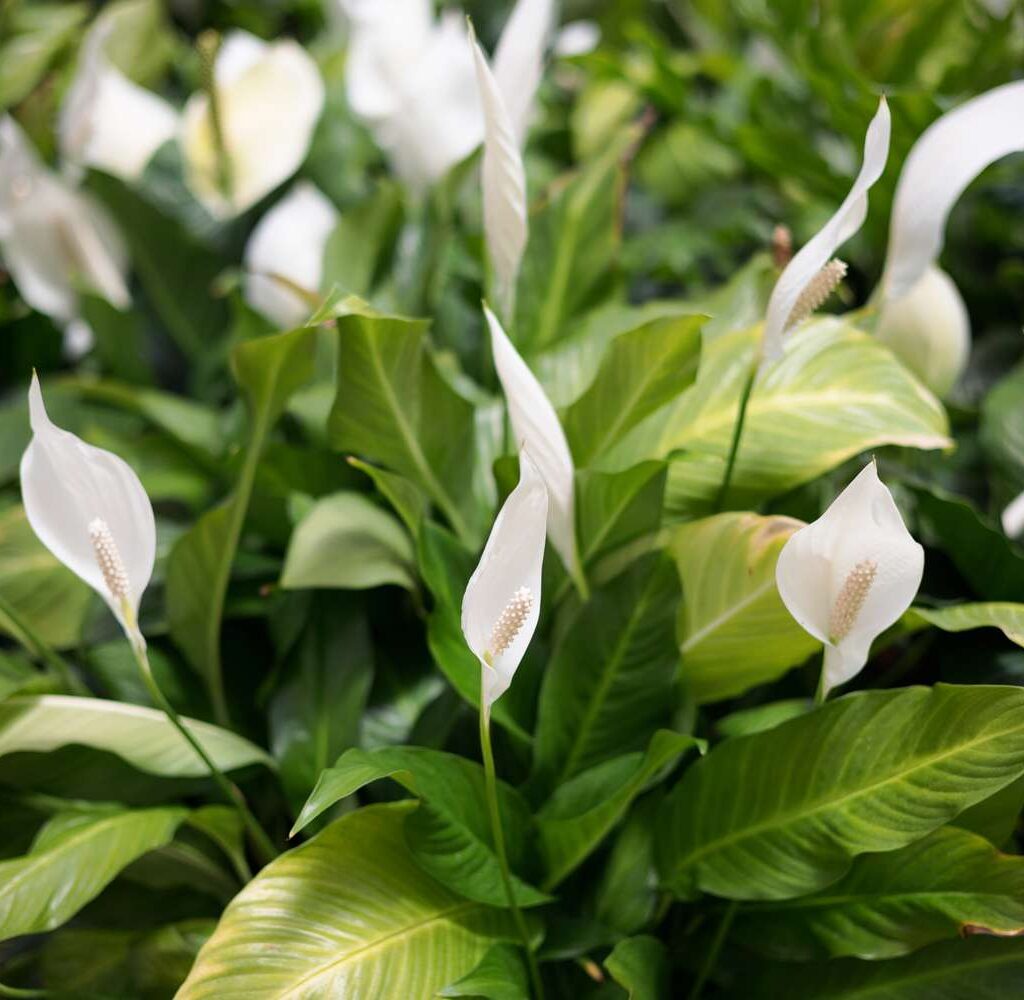
Watering Your Peace Lily
Watering is one of the most critical aspects of Peace Lily care.
How to Water
- Keep the soil consistently moist but not soggy. Water when the top inch of soil feels dry to the touch.
- Typically, watering once a week is sufficient, but this depends on your home’s temperature, humidity, and pot size.
- Use room-temperature water to avoid shocking the roots.
- Avoid overwatering — waterlogged soil can cause root rot, leading to yellowing leaves and plant decline.
Signs of Overwatering
- Yellowing leaves, especially lower leaves
- Wilting despite wet soil
- Soft, mushy stems or roots
Signs of Underwatering
- Drooping leaves that perk up after watering
- Brown leaf tips and edges
Feeding and Fertilizing
To keep your Peace Lily healthy and encourage blooms, regular feeding is important.
- Use a balanced, water-soluble houseplant fertilizer (e.g., 20-20-20) diluted to half strength.
- Feed your plant every 6 weeks during spring and summer, the active growing season.
- Reduce feeding during fall and winter when growth slows.
- Avoid over-fertilizing as it can cause leaf burn or salt buildup in the soil.
Light and Blooming Cycle
Peace Lilies bloom best when they get the right balance of light and care.
- With enough indirect light, Peace Lilies produce white flowers called spathes that can last several weeks.
- If your Peace Lily isn’t flowering, try moving it to a slightly brighter spot or adjusting your watering and fertilizing routine.
- Blooming generally occurs during spring and summer but can happen year-round indoors.
Pruning and Grooming
Regular maintenance helps your Peace Lily look its best.
- Remove yellowing or damaged leaves by cutting them at the base with clean scissors.
- After flowers fade, cut the flower stalks back to the base to encourage new blooms.
- Wipe leaves with a damp cloth occasionally to remove dust and help the plant breathe and photosynthesize efficiently.
Repotting Your Peace Lily
Peace Lilies benefit from repotting every 1-2 years or when they become root-bound.
- Spring is the best time to repot.
- Gently remove the plant from its pot and loosen the roots.
- Choose a pot about 1-2 inches larger in diameter than the current one.
- Add fresh soil and water thoroughly after repotting.
Common Problems and How to Fix Them
Brown Leaf Tips or Edges
- Caused by dry air, inconsistent watering, or fluoride in tap water.
- Increase humidity, keep watering consistent, and use filtered or distilled water if possible.
Yellow Leaves
- Often a sign of overwatering or poor drainage.
- Check soil moisture and improve drainage or watering habits.
Drooping Leaves
- Usually underwatering or root issues.
- Water thoroughly and check roots for rot.
Pests
- Watch for spider mites, aphids, and mealybugs.
- Treat infestations with insecticidal soap or neem oil.
Propagating a Peace Lily
Propagation is an easy way to multiply your Peace Lilies.
- The best method is division during repotting.
- Gently separate a section of the root ball with stems and replant in a new pot.
- Water well and keep the new plant in indirect light.
Peace Lily and Pets
Peace Lilies are toxic to cats and dogs if ingested. Keep them out of reach of pets or opt for pet-safe plants if this is a concern.
Final Tips for Thriving Peace Lilies
- Be patient — Peace Lilies grow relatively slowly indoors.
- Adjust care based on your specific environment.
- Monitor your plant regularly to catch issues early.
- Remember, a little neglect usually won’t kill a Peace Lily, making it a perfect beginner plant!
Conclusion
Caring for a Peace Lily indoors is a rewarding experience that adds beauty and health benefits to your living space. With its elegant foliage and stunning white blooms, this tropical plant is a low-maintenance companion for beginners and experts alike.
By providing the right balance of light, water, humidity, and nutrients, your Peace Lily will thrive, purify your air, and bring a peaceful, natural atmosphere to your home for years to come.

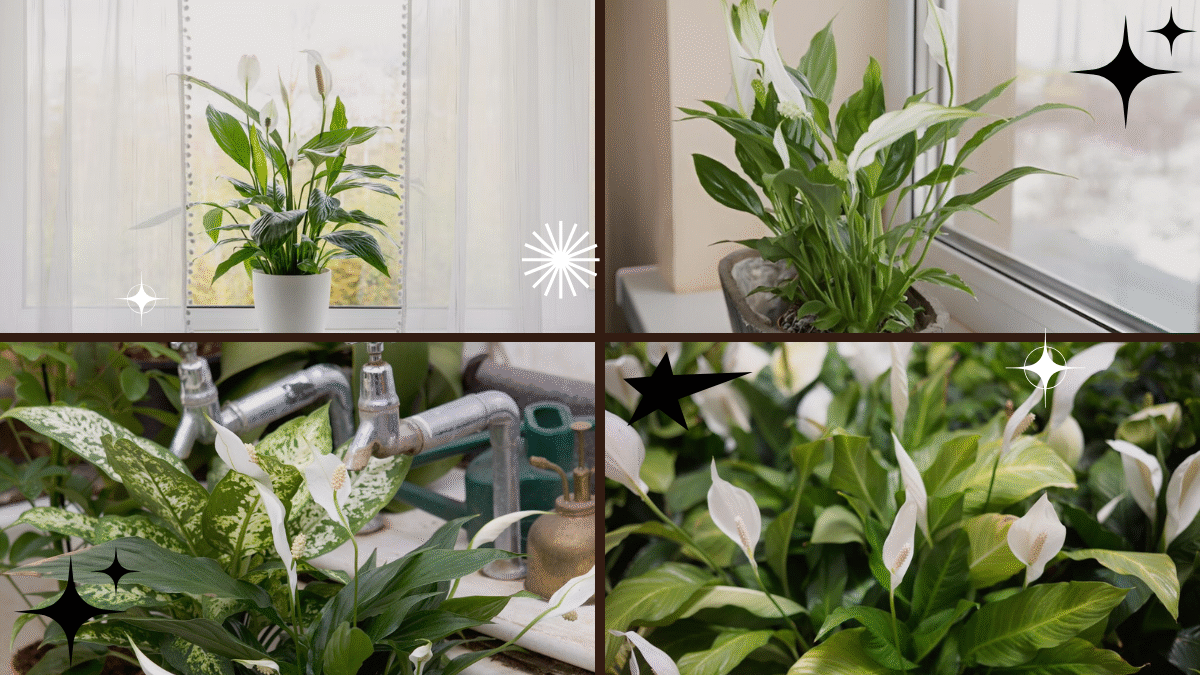



Leave A Comment